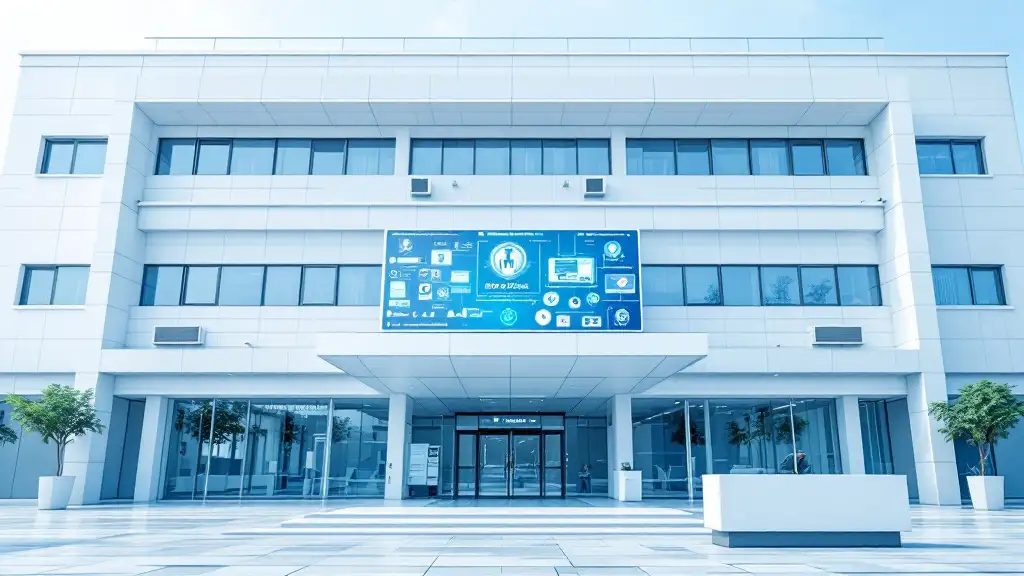Avoiding ER Visits Through Effective Telemedicine Use

Introduction: The Rising Role of Telemedicine in Emergency Situations
In recent years, telemedicine has emerged as a pivotal tool in modern healthcare, especially in reducing unnecessary emergency room (ER) visits. The integration of digital health solutions not only improves patient access and satisfaction but also alleviates ER overcrowding and reduces healthcare costs. This article explores how effective telemedicine use can transform emergency care, backed by evidence from trustworthy sources, and outlines strategies to maximize its benefits while addressing current challenges.
The Impact of Telehealth on Healthcare Outcomes and Patient Satisfaction
How does telehealth impact healthcare outcomes, patient satisfaction, and re-hospitalization rates?
Telehealth has proven to be a transformative tool in modern healthcare, offering notable improvements in managing chronic diseases and enhancing overall patient outcomes. For example, in conditions like diabetes and multiple sclerosis, remote monitoring and consultations have led to better clinical metrics such as HbA1c levels and reduced hospital visits.
Patient engagement also sees significant gains through telehealth services. Patients report high satisfaction levels due to the convenience of virtual care, which offers easy access without the need for travel. Diverse populations, including those with mental health issues or pediatric needs, benefit from tailored digital approaches, often leading to better adherence to treatment plans.
Furthermore, telehealth contributes to lowering re-hospitalization and emergency visit rates. Continuous remote monitoring and timely interventions help catch issues early, preventing urgent care visits. For example, patients with heart failure who received telehealth follow-up showed reduced 30-day readmission risks in several studies.
Operationally, telehealth improves healthcare delivery by shortening wait times, reducing no-shows, and cutting costs. It expands access to care for those in rural or underserved areas, overcoming geographical and logistical barriers.
In summary, telemedicine advances health outcomes and patient satisfaction by providing consistent, accessible, and personalized care. While it shows many benefits, ongoing efforts are needed to ensure equitable access across different populations and regions.
| Aspect | Benefits | Examples |
|---|---|---|
| Health Outcomes | Improved disease control, fewer hospitalizations | Diabetes, MS, heart failure |
| Patient Satisfaction | High satisfaction, convenience, better adherence | Mental health, pediatric care |
| Re-hospitalization | Reduced post-discharge readmissions | Heart failure follow-up studies |
| Access & Efficiency | Faster care, fewer no-shows, cost savings | Rural hospitals, outpatient services |
Telehealth continues to shape the future of healthcare, emphasizing the importance of integrating digital solutions to improve both patient experiences and clinical results.
Benefits of Telemedicine in Preventing Emergency Room Utilization

What are the benefits and effectiveness of telemedicine in preventing emergency department utilization?
Telemedicine plays a vital role in reducing unnecessary emergency room visits by providing remote healthcare options for non-urgent health issues. It allows patients to consult healthcare providers via video calls or digital platforms, addressing concerns without the need for physically visiting a clinic or hospital.
Studies indicate high patient acceptance and satisfaction with telemedicine services. Many patients find video consultations effective for managing conditions such as chronic diseases, mental health issues, and post-discharge follow-ups. For instance, during the COVID-19 pandemic, nearly 90% of telehealth users reported satisfaction with their experience, citing convenience and quick access to care.
Cost savings are another significant benefit. By diverting cases away from emergency departments, telemedicine reduces the financial burden on both healthcare systems and patients. A typical virtual visit costs about $49, compared to $84–$131 for a doctor’s office visit and between $358–$1,595 for ER visits. Avoiding emergency care through telehealth can save between $309 and $1,546 per diverted ER visit.
Furthermore, telemedicine helps resolve health concerns remotely. Many issues, such as minor infections, medication adjustments, and follow-up care, are effectively managed without in-person visits, which reduces wait times and streamlines healthcare delivery.
Beyond individual benefits, telehealth contributes to easing ER overcrowding. By managing non-urgent cases remotely, it reduces the volume of patients seeking emergency care, potentially decreasing wait times and resource strain. For example, one study reported a 5–12% reduction in emergency department traffic due to telemedicine interventions.
In summary, telemedicine’s effectiveness lies in its ability to provide accessible, patient-centered care, lower costs, and alleviate pressure on emergency services. As digital health adoption expands, its role in reducing ER visits and improving overall healthcare efficiency continues to grow.
Strategies to Effectively Reduce Unnecessary ER Visits via Telemedicine

How can telemedicine effectively reduce unnecessary emergency room visits?
Telemedicine offers a practical solution to lower avoidable ER visits by enabling prompt, remote consultations for non-urgent concerns. Research indicates that a majority of patients — about 82.8% — believe that video consultations and digital prescriptions can serve as suitable alternatives for mild illnesses.
Patient education plays a crucial role; studies show that nearly 90% of users perceive telehealth as beneficial in increasing understanding of self-care and symptom management, making them less likely to seek emergency services for minor issues.
Specialized telehealth programs have also demonstrated tangible benefits. For example, initiatives focusing on vulnerable populations like dementia patients showed a 24% decrease in ER visits and a 25% reduction in hospitalizations. Virtual urgent care services stand out for their capacity to deliver quick, accessible attention, which leads to fewer reconsultations and higher satisfaction rates, with around 90% of patients expressing contentment with telemedicine.
Cost savings further support telehealth’s role in reducing unnecessary ER utilization. By diverting non-urgent cases from overcrowded emergency departments, telemedicine helps optimize healthcare resources, cut costs, and improve patient outcomes. This integrated approach encourages patients to manage minor illnesses at home or through scheduled virtual visits, alleviating pressure on ERs and hospitals alike.
In summary, deploying telemedicine strategically enhances health system efficiency, diminishes unnecessary emergency visits, and ensures timely care for those who truly need it.
Using Telemedicine to Manage Specific Conditions and Prevent ER Visits
How can telemedicine be used in managing specific conditions, such as diabetes or heart failure, to prevent ER visits?
Telemedicine offers effective strategies for managing chronic illnesses like diabetes and heart failure from a distance. Patients can undergo remote monitoring of key health parameters, including blood glucose levels and blood pressure, which allows healthcare providers to detect early signs of complications.
Through regular virtual check-ins, providers can support medication adherence, deliver tailored patient education, and reinforce self-management practices. These virtual interactions include phone calls, video consultations, and the use of remote monitoring devices, facilitating quicker treatment adjustments without the patient needing to visit a clinic or hospital.
Such proactive management improves clinical outcomes and helps in preventing health crises. For example, timely intervention when blood sugar or blood pressure readings indicate deterioration can avert emergency room visits. Moreover, remote management encourages lifestyle changes, with ongoing support for diet, physical activity, and medication routines.
Addressing health disparities by expanding access to telehealth services is crucial to ensure all patient populations benefit from these preventive measures. Overall, telemedicine helps reduce unnecessary ER visits, easing the burden on emergency departments and improving patient quality of life.
| Condition | Remote Monitoring Focus | Typical Interventions | Benefits |
|---|---|---|---|
| Diabetes | Blood glucose, HbA1c | Insulin adjustments, blood sugar education | Reduced hospitalizations, improved glycemic control |
| Heart Failure | Blood pressure, weight, oxygen levels | Medication management, lifestyle advice | Fewer readmissions, early detection of deterioration |
Implementing technology such as glucose monitors, wearable devices, and connected health platforms enhances these efforts by providing real-time data to clinicians, enabling prompt and personalized care.
Strategies and Interventions for Optimizing Telemedicine Use
How can telemedicine be effectively used to prevent unnecessary emergency department visits?
To maximize its potential in reducing ER congestion, several strategies should be adopted. First, increasing awareness and education among patients is crucial. Patients need to understand when and how to use telehealth services appropriately, including self-care options and recognizing urgent versus non-urgent issues.
Secondly, establishing on-demand, around-the-clock telemedicine availability ensures patients can access care promptly. This immediate access helps manage minor health concerns remotely, preventing escalation that requires ER intervention.
Integrating telehealth into management plans for chronic diseases like diabetes is also highly beneficial. Regular virtual check-ins, blood glucose monitoring, and patient education facilitate early detection of potential problems, reducing complications and emergency hospital visits.
Enhancing access through hybrid care models that combine in-person and remote visits offers flexible, patient-centered solutions. Remote triage and follow-up care enable healthcare providers to monitor health conditions regularly and intervene early.
Finally, fostering strong collaboration between providers and engaging community outreach programs support sustainable telemedicine deployment. Continuous evaluation and adaptation of telehealth services ensure they meet evolving patient needs and help alleviate emergency department overload.
| Strategy | Implementation Example | Expected Benefit |
|---|---|---|
| Patient Education & Awareness | Communication campaigns, tutorials, patient portals | Better utilization and appropriate use of telehealth |
| On-demand Telehealth Access | 24/7 virtual consultation platforms | Immediate care for non-urgent issues, reducing ER visits |
| Chronic Disease Integration | Remote monitoring, virtual check-ins, patient training | Early intervention, improved health outcomes, fewer emergency cases |
| Hybrid & Follow-up Models | Scheduled in-person and virtual visits, remote follow-up | Timely treatment, better health monitoring |
| Provider & Community Engagement | Training, outreach programs, collaboration with local clinics | Sustainable telehealth practice, wider reach, community trust |
Developing these strategic approaches, backed by technological solutions and policy support, will optimize telemedicine’s role in reducing unnecessary emergency room visits and better managing health care needs.
Improving Access, Education, and Care Transitions through Telehealth
What methods can improve access, patient education, and care transitions through telemedicine to prevent ER visits?
Expanding broadband infrastructure is essential to ensure reliable internet access in underserved areas, making telehealth services more accessible to all populations. Alongside this, implementing digital literacy programs helps patients and caregivers navigate telemedicine platforms confidently, reducing barriers to engagement.
Integrating telehealth into routine care workflows is crucial. For example, incorporating remote monitoring and virtual check-ins for chronic conditions like diabetes or dementia ensures ongoing supervision and timely treatment adjustments. This continuous care can prevent exacerbations that often lead to ER visits.
Training both healthcare providers and patients on effective telehealth use promotes trust and better communication during virtual consultations. Clear guidance on how to communicate symptoms and understand medical advice can improve patient satisfaction and adherence.
Policymakers have a vital role in supporting sustainable telehealth by enacting policies that sustain flexible regulations, reimbursement structures, and funding for ongoing infrastructure improvements. Community partnerships with local organizations and technology providers can help bridge gaps, ensuring equitable access and digital literacy.
Incorporating telemedicine into care transition protocols, such as scheduled follow-ups, medication management, and early detection of potential complications, fosters seamless continuity of care. These strategies are instrumental in reducing avoidable emergency room visits, optimizing health outcomes, and managing healthcare resources efficiently.
Evidence Supporting Telemedicine in Reducing Emergency Healthcare Utilization

What evidence and studies support the role of telemedicine in reducing emergency healthcare utilization?
Numerous research efforts highlight how telemedicine can help decrease the burden on emergency departments (EDs). A comprehensive study analyzing data from over 270,000 patients across various specialties found that telehealth services reduced waiting times by an average of 25.4 days. This reduction was even more pronounced in surgical and clinical settings, illustrating how remote consultations can streamline access to care.
Research also indicates that telemedicine effectively lowers ED revisit rates. For example, during the COVID-19 pandemic, telehealth was employed to follow up with patients with chronic diseases like heart failure and diabetes. These patients experienced fewer hospital readmissions, and their cases required fewer in-person visits, easing ED congestion.
Patient satisfaction surveys consistently report high approval for telehealth services. One study showed that 90% of patients were satisfied with telemedicine visits, citing convenience and prompt access to care. Moreover, treatment adherence improved significantly, with rates as high as 97.5%, reflecting better engagement and trust in remote care.
The Veterans Affairs (VA) health system provides further evidence supporting tele-emergency care. VA studies found that telehealth reduced in-person ED visits by almost 50%, led to fewer hospitalizations, and generated considerable cost savings. These outcomes demonstrate how telemedicine can serve as an effective alternative to traditional emergency care, especially for vulnerable populations.
Collectively, these findings underscore the broad potential of telehealth initiatives to alleviate emergency department overcrowding, improve patient outcomes, and cut healthcare costs. As technology advances and acceptance grows, integrating telemedicine into standard emergency care strategies holds promise for healthier, more accessible healthcare systems.
Challenges and Policy Considerations in Telehealth Adoption

What challenges are faced in telehealth adoption, and what policies can support wider implementation?
Implementing telehealth on a broad scale faces several hurdles. A primary challenge involves high startup costs. Rural hospitals, for instance, often encounter initial expenses ranging from $17,000 to $50,000, with ongoing yearly costs exceeding $60,000. These financial burdens can be prohibitive, especially for resource-limited facilities.
Reimbursement policies also pose significant obstacles. Many current models favor payments to remote specialists rather than rewarding local hospitals or primary care providers for telehealth services. This creates a disincentive for some healthcare organizations to adopt telemedicine, particularly in rural or underserved areas.
To promote wider access, policymakers are encouraged to reform reimbursement structures. Adjusting payment models to fairly compensate rural hospitals and clinics for telehealth consultations is critical. Expanding service coverage under public and private health plans can also reduce financial barriers for providers and patients.
Beyond financial matters, addressing the digital divide is essential. Many populations in remote and underserved regions lack reliable high-speed internet or digital literacy, which hampers effective telehealth delivery. Policies aimed at expanding broadband infrastructure and providing digital literacy programs can help bridge these gaps.
Ensuring quality and safety standards for telemedicine is another vital step. Clear guidelines and regulations help maintain trust among patients and providers, ensuring that remote care meets rigorous healthcare standards.
By focusing on these areas—cost reduction, equitable reimbursement, infrastructure expansion, digital literacy, and quality assurance—healthcare systems can overcome barriers and fully leverage telehealth’s potential. Such policies will not only support reducing unnecessary ER visits but also promote health equity for all populations.
Future Outlook and Innovations in Telemedicine for Emergency Care

What is the future outlook for telemedicine in preventing emergency visits and improving care?
The future of telemedicine in reducing emergency visits and enhancing overall care looks highly promising. Advances in emerging technologies like artificial intelligence (AI), machine learning, and predictive analytics are set to transform emergency healthcare delivery.
AI-driven tools can analyze vast amounts of patient data from wearable devices and remote monitoring systems to identify individuals at risk of health crises early. This enables healthcare providers to intervene proactively, often preventing emergencies before they occur.
Integration of these technologies into telehealth platforms allows for real-time data sharing, supporting clinicians with rapid decision-making and personalized treatment plans. Such systems can automatically flag warning signs or deteriorating conditions, encouraging timely interventions remotely.
Wearable health devices, including continuous glucose monitors, blood pressure cuffs, and smart watches, further contribute to this proactive approach. Data from these devices can be transmitted instantly to healthcare teams, facilitating continuous monitoring outside the clinical setting.
Long-term benefits of adopting these innovations include not only better clinical outcomes and higher patient satisfaction but also substantial cost savings. By emphasizing prevention through early detection and personalized interventions, healthcare systems can reduce unnecessary emergency department visits, hospitalizations, and resource utilization.
Furthermore, expanding access through telemedicine addresses disparities faced by underserved, rural, or socially disadvantaged populations. These regions especially benefit from rapid, remote consultation options, bridging gaps in specialist care and reducing delays.
As policies evolve to support reimbursements, infrastructure, and data security, telehealth’s role in emergency care will grow. Overall, embracing technological innovations will shift healthcare from a reactive model to one focused on prevention, early detection, and personalized care, ultimately transforming emergency services into more efficient, accessible, and patient-centered systems.
Conclusion: Toward a More Accessible and Efficient Emergency Care System
Telemedicine has proven to be a transformative force in reducing unnecessary ER visits, improving health outcomes, and elevating patient satisfaction. Its capacity for remote disease management, early intervention, and accessible care makes it an indispensable component of modern healthcare, especially in times of crisis like the COVID-19 pandemic. By addressing challenges related to infrastructure, policy, and digital literacy, healthcare providers and policymakers can unlock the full potential of telemedicine. Embracing technological innovations and fostering collaborative efforts will help create an emergency care system that is more accessible, efficient, and patient-centered, ultimately leading to better health outcomes and sustainable healthcare delivery.
References
- The Impact of Telemedicine on Emergency Department ...
- How telemedicine helped this health system's patients ...
- How Telemedicine Is Improving Patient Outcomes and ...
- Estimating the Proportion of Telehealth-Able United States ...
- Telehealth to Avoid Emergency Department Visit and ...
- Effectiveness of Telemedicine Visits in Reducing 30‐Day ...
- In-Person vs Telehealth Follow-up and Rates of Repeated ...
- Reducing Unnecessary Emergency Department Visits
- Place of telemedicine in the organization of emergency care
Recent articles
Want to Feel Better and Live Healthier?
Join hundreds of patients taking control of their health with personalized care that fits their life – not the other way around.
Rated 4.8/5 by 32+ customers







